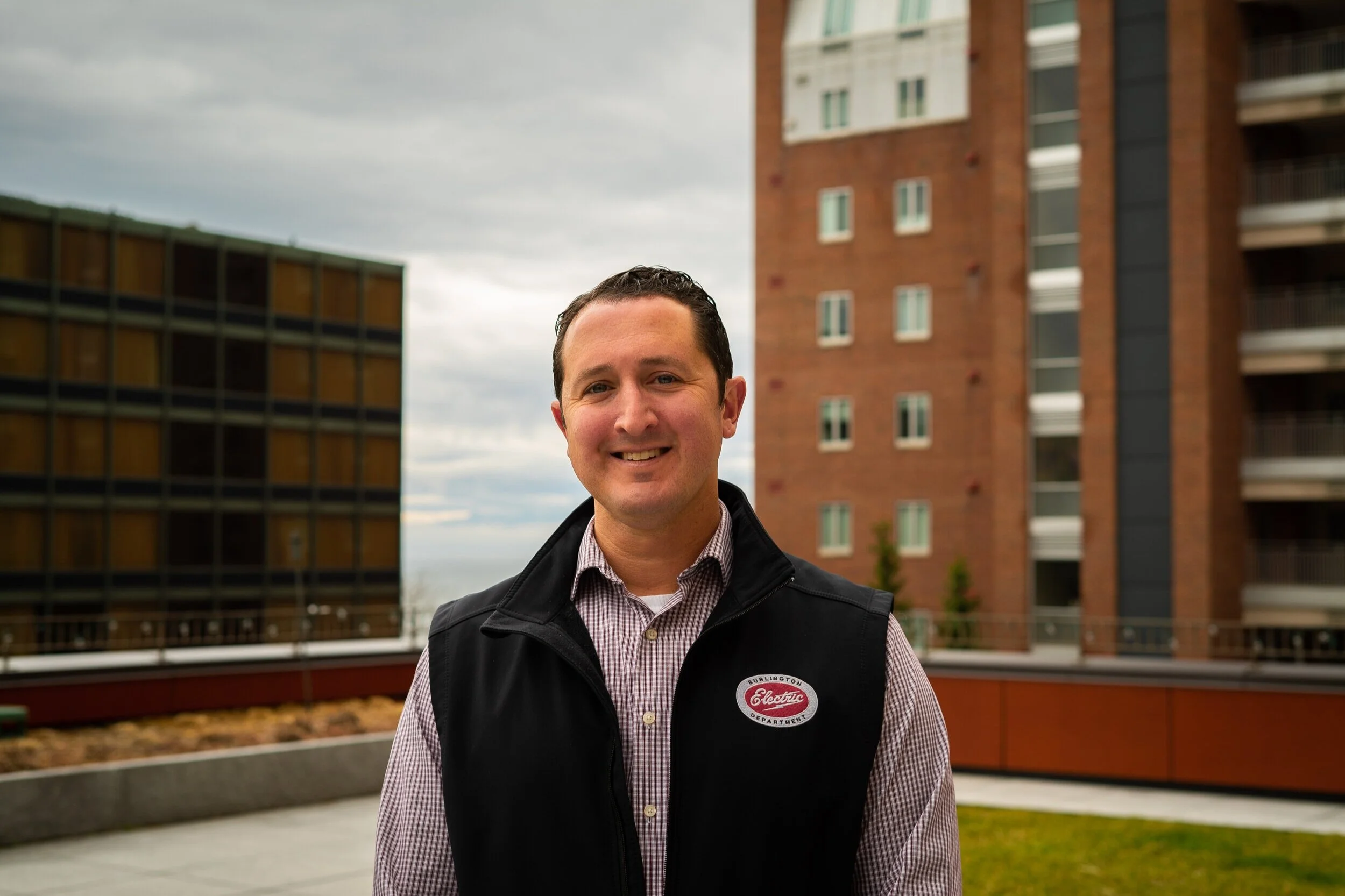DARREN SPRINGER
General Manager, Burlington Electric Department
Burlington Electric Department (BED) is the municipal utility that powers the city of Burlington, Vermont. It is proof that we can have 100% renewable electricity generation today! Their grid runs without the use of fossil fuels. Their generation portfolio is ⅓ from burning wood chips, ⅓ from hydropower, and ⅓ from wind. They have an ever-increasing percentage coming from solar.
“In 2014 Burlington was recognized as the first city in the nation to source 100% of our power from renewable generation, and that's a proud accomplishment for the community.”
Darren explains the different types of utilities. BED is a public utility. The United States has a mix of investor-owned, cooperatives, and municipal utilities like BED.
The entire state of Vermont and 5 other New England states are a part of the ISO New England. Electricity costs are based on how much electricity BED is using during the one hour of the year when the New England region is using the most electricity (the peak). Peak demand is their biggest cost driver. So BED focuses on how they can reduce their use during that peak. It saves customers and the utility money. Also, during that peak, dirty fossil fuel plants are fired up to make up for the additional electricity needed. So avoiding that peak also means reducing the amount of CO2 released.
BED is piloting a program using Omega Grid’s blockchain technology to help customers manage demand during peaks. When the utility saves, every ratepayer realizes the benefit from that. So when customers help BED reduce energy use during peak days BED donates to a charitable organization.
Burlington has a goal of becoming a net zero energy city. And that's one of the most ambitious climate goals at the municipal level in the country. Now that Burlington has 100% renewable electricity, the next step is to convert all forms of energy use to electricity. The transportation sector and the heating sector are the two areas where Vermont has an emissions challenge.
BED is also planning to use the waste heat from the generating plant to create a district heating system, delivering thermal heat for buildings. “It would be the single biggest emissions reduction step we could take in the heating thermal sector in the city of Burlington.”
Darren explains how adding more electricity use, (from new EVs) at the right times (off-peak) actually puts downward pressure on the rate because you’re getting more units of electricity without adding to the infrastructure. It is like getting a second shift running at a factory. “So if you come home, you have a level 2 charging station in your home, one of the stations that you install, you plug in, you set your vehicle to charge every night starting at 10 and you charge up until noon the next day, and we'll reduce your kilowatt hour charge for that electric vehicle charging such that it's the equivalent of about 60 cents a gallon of gas to charge your electric vehicle.” EVs may also be useful in balancing the grid if we use them as batteries and share them with the utility, vehicle-to-grid charging.
Darren hopes that his department will serve as an example to the rest of the world, and they have already begun to inspire imitation. Burlington Electric Department is running on 100% renewable energy. They proved that it was possible, now it’s time for the rest of our utilities to follow suit.
“If you think about the impact of what we can do here in Burlington, the first thing is we want it to be reliable, affordable, sustainable for our customers and for our community. But if we can have an impact that's bigger than that; if we can create an economically beneficial model that's exportable for other communities to look at, then our impact is greater than our emissions reduction potential is greater. And we want to be a beacon for communities that are looking for a model of how can we do this. We want to show what's possible.”

